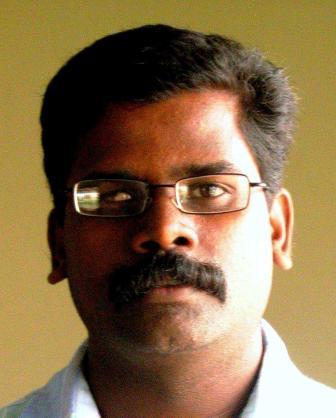Abhishek Bhagat
 Religion is a core part of human life. It is belief system which governs human behavior. There are many religions like Christianity, Islam, Hindu, Buddhist, Taoism, Sikhism, Judaism, etc. Many principles are common among them but there are fundamental philosophical differences too. The common bit certainly consists of different religionists’ insistence on the superiority of one’s own religion. This common tendency causes violence, hatred and destabilizes religious and societal harmony. The major source of religious beliefs are the prescribed religious scriptures or holy books of every religion. Hence, it is important to understand and critically engage with them.
Religion is a core part of human life. It is belief system which governs human behavior. There are many religions like Christianity, Islam, Hindu, Buddhist, Taoism, Sikhism, Judaism, etc. Many principles are common among them but there are fundamental philosophical differences too. The common bit certainly consists of different religionists’ insistence on the superiority of one’s own religion. This common tendency causes violence, hatred and destabilizes religious and societal harmony. The major source of religious beliefs are the prescribed religious scriptures or holy books of every religion. Hence, it is important to understand and critically engage with them.
In this short essay, I argue that being doubtful towards holy books or scriptures is rational and courageous. Because when there are different versions of the holy book/s deciding which one represents the original words of God, is a huge question.
It is a common understanding that a follower believes that God created the whole universe and implanted the seed of knowledge, hence, the ultimate source of knowledge is a god. This knowledge of god is engraved in holy scripture, therefore, it is flawless, indubitable and hence cannot be subjected to critique or examination. However, it is very evident and clear that God himself has never written any religious text. It is a particular human being’s testimony whose word we take to be God’s word. The underlying claim is that it is god who is revealing himself through a particular human being. Why in the first place has God chosen a particular human being to share his knowledge rather than transmitting the same to all? It is for this reason that a thinker like Thomas Paine insisted that a “rational reader was not obliged to believe them.” (Dixon, T. 2008).
There are several versions of religious scriptures or holy books: as Thapar, R. (2015) pointed out that there are different versions of Ramayana which include the Kamba Ramayana in Tamil, the Krittibas in Bengali and the Tulsi Ramayana in Hindi. In addition, the original Ramayana written by Valmiki is doubted (Ambedkar 2008, p.243). Similarly, Mahabharata which underwent essential transformations, comprises of three editions, Jaya was written by Vyas in a story form, Bharat which was written by Vaishampayana added the sermon in the first form, and the third is the Mahabharata which was written by Sauti, with added sections on politics, geography, archery, etc. (Ambedkar 2008, p.249-252). Other religious scriptures, including that of Islam and Christianity, are not exceptions. There are different versions of Koran and Bible also (Dawkins, R, 2012). In Buddhism1 also there are different versions of Dhammapada as suggested by Bhikku Thanissaro. It consisted of:
“..Pali Dhammapada from Burma, Cambodia, Laos, Sri Lanka, and Thailand; two incomplete manuscripts of a Gandhari Dharmapada found in central Asia; and a manuscript of a Buddhist Hybrid-Sanskrit Dharmapada found in a library in Tibet, called the Patna Dharmapada because photographs of this manuscript are now kept in Patna, India. There is also a Chinese translation of the Dharmapada made in the third century C.E. from a Prakrit original, now no longer extant, similar to–but not identical with–the Pali Dhammapada.”
Which of them (the version of holy books or scriptures) are authentic and manifests of the original words of God, is a huge question? Besides, it has been shown that these versions of the same holy books contradict each other (Dawkins, R. 2012).
Hume, D. (2004, p.01) reiterates the ways philosophers construct the theories which later become traditions that govern human behavior. Following quote by him reflects on the same: “When a philosopher comes up with something that looks like a paradox and is contrary to basic beliefs of ordinary folk, it often fares better than it deserves, for two reasons. It is greedily embraced by philosophers, who think it shows the superiority of their discipline that could discover opinions so far from common beliefs. When something surprising and dazzling confronts us, it gives our minds a pleasurable sort of satisfaction that we can’t think is absolutely baseless. These dispositions in philosophers and their disciples give rise to a relation of mutual comfort between them: the former furnish many strange and unaccountable opinions, and the latter readily believe them.”
Isn’t there a possibility that those who produce these different versions of religious scriptures belong to the category of philosophers that Hume is unfolding?
Marxists view religion as “Opium of the people”, which leads to illusory happiness and avoids oppressive nature of social reality, hence, it needs to be abolished (Mckinnon, 2005). Similarly, Dawkins describes it is as “bloody irrational faith, the process of non-thinking” and that makes him claim religion is “root of all evil” (Dawkins, R. 2012). Thus, Marxist and Dawkins appear to have taken an extreme position against religion – avoiding the good purposes it serves. However, what Marxists and Dawkins say about religion cannot be ignored. Because people have been killed and evil’s being practiced in society in the name of religion or God. For instance; the practice of untouchability, Devadasi tradition, lynching, the brutal activities of militant groups illustrate how fundamentalist faiths can create unrest and destabilize societal harmony. Interestingly, very often fundamentalists rationalize their actions on the basis of holy books2.
Bertrand Russell (2009) raised a question, “Is there any knowledge in the world which is so certain that no reasonable man could doubt it?”; that makes him state that “I would never die for my beliefs because I might be wrong.” Similarly, Descartes (1985) claimed that he cannot doubt his own existence only because he can think (I think, therefore I am), otherwise everything else can be doubted. He argues that there is no perfect or certain knowledge, but its validity and weight can be judged through the logical method of doubt. It is this method of doubting or questioning that led Copernicus & Kepler to challenge the prevalent religious notion of his time that the earth is the center of the solar system and other planets revolve around it.
They would have never discovered the sun is the center of the solar system and other planets (including earth) revolve around it if they had not questioned the religious scriptures. Similarly, the 14th Dalai Lama (2010) suggested that in Abhidharma text in Buddhism it has been described that “the size of moon and sun are same”. It is not only scientifically proven but seen by human eyes that both planets differ in size, so won’t it be better to reject the claim of the theological text in this regards and accept the illuminating truth. So, it is this critical approach which allows one to dig out the rational and irrational beliefs in religion. Nowadays many religious scientists or spiritual leaders follow this approach and allow science its own space in religious affairs also (Dixson, T. 2008).
Therefore, it seems being doubtful and critical towards holy scriptures seems rational, courageous and symbolizes a scientific temper. Because, it is contradictory, vague and does not necessarily reveal the actual word of God. Secondly, it is important to keep religion open for critique and examination because it is the only way for bringing religious reforms. One must understand that the “beliefs” are not “facts”, which means they are subject to change, modification.
~
Notes
1. Tibetan Buddhist scholar Alan Wallace viewed Buddhism as a philosophy. Because there is no notion of ‘god’ or ‘supernatural being’ in it. Secondly, it can be changed, modified and examined. Buddha himself asserted that even his own words can be subjected to testing and may change over time. (Wallace, 2017)
2. There is disagreement between liberal and evangelical Christians over the issue of human sexuality and both factions rationalize their actions on the basis of the Bible (Smith, G. 2008).
References
Ambedkar (2008). Ch-10 Literature of Brahmanism. Dr. Babasaheb Ambedkar Writing and Speeches, Vol. 3, p. 237-265, Government of Maharashtra.
Russell, B. (2009). The Problems of Philosophy, Watchmaker Publishing.
Dalai Lama (2010). The Four Noble Truths. Harper Collins, New Delhi.
Dawkins, R. (2012). The God Delusion. Documentary.
Descartes, R. (1985). Rules for the Direction of the Mind, The Philosophical Writings of Descartes, Vol 1, pp. 7-77. Cambridge University Press, New York.
Hume, D. (2004). Treatise of Human Nature.
Mckinnon (2005). Opium as Dialectics of Religion: Metaphor, Expression and Protest, Critical Sociology, Vol 31, No 1/ 2, pp. 15-38.
Smith, G. (2008). A Short History of Secularism. I.B. Tauris, New York.
Thanissaro (). Dhammapad: A Translation. Buddha Dharma Education Association Inc. p.136
Thapar, R. (2015). Linking the Past and the Present. Interview with Romila Thapar by Ranabir Chakravarti, Vol 32, No.18, p. 26. Frontline.
Wallace, A., Carroll, S. & Gleiser, M. (2017). The Nature of Reality: A Dialogue Between a Buddhist Scholar and a Theoretical Physicist. Nourse Theater – San Francisco, CA, https://www.youtube.com/watch?v=pLbSlC0Pucw
~~~
Abhishek Bhagat is an M.Phil. scholar at the Tata Institute of Social Sciences, Mumbai.










